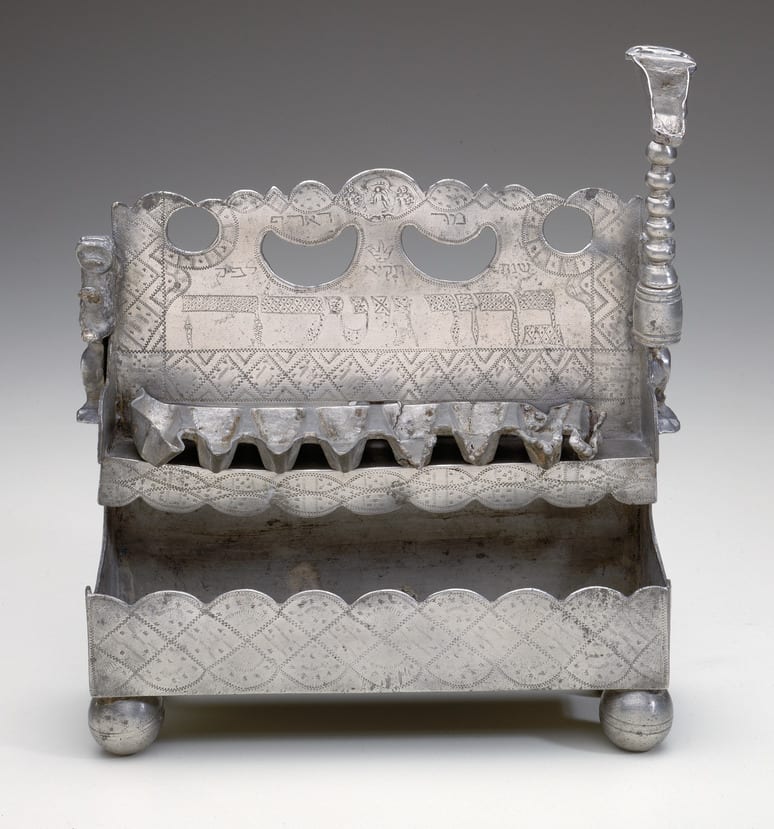
- Object Name:
- Hanukkah Lamp
- Artist/Maker:
- F C B
- Place Made:
- Hanau (Germany)
- Date:
- 1750/51 and 1777/78 (date of inscription)
- Medium:
- Pewter: wrigglework, engraved, pierced, appliqué, and cast
- Dimensions:
- 9 1/2 × 9 1/4 × 3 1/4 in. (24.1 × 23.5 × 8.3 cm)
- Credit Line:
- Gift of Dr. Harry G. Friedman
- Accession Number:
- F 184
Not On View
The Hebrew inscriptions suggest that the lamp was both a wedding gift and a treasured family heirloom. The large letters across the backplate mention a couple's names, Barukh and Gittele, along with the date of 1750/51 and the place where they lived. Mardorf was a small town some one hundred kilometers from the city of Hanau, where the lamp was made. Twenty-seven years later, two other names were added to the sidepiece, probably commemorating the marriage of the next generation in the family, also in Mardorf.
Written sources indicate that by the early eighteenth century, Hanukkah lamps were considered important wedding gifts in Germany. For example, a law passed in 1715 by the Jewish Council of Frankfurt prohibited extravagant displays of silver wedding gifts at a special reception held before the ceremony, when the bride and groom sat together for the first time. Only three silver items were allowed, among them a leuichter, which was likely a Hanukkah lamp.
A number of other examples of this type, characterized by its scalloped, horizontal upper edge and crescent-shaped holes, are known. Based on their masters' marks and Hebrew inscription dates, the type would appear to have been produced in Hesse and neighboring northern Bavaria in the second half of the eighteenth century through the early nineteenth century.
Written sources indicate that by the early eighteenth century, Hanukkah lamps were considered important wedding gifts in Germany. For example, a law passed in 1715 by the Jewish Council of Frankfurt prohibited extravagant displays of silver wedding gifts at a special reception held before the ceremony, when the bride and groom sat together for the first time. Only three silver items were allowed, among them a leuichter, which was likely a Hanukkah lamp.
A number of other examples of this type, characterized by its scalloped, horizontal upper edge and crescent-shaped holes, are known. Based on their masters' marks and Hebrew inscription dates, the type would appear to have been produced in Hesse and neighboring northern Bavaria in the second half of the eighteenth century through the early nineteenth century.
Information may change as a result of ongoing research.